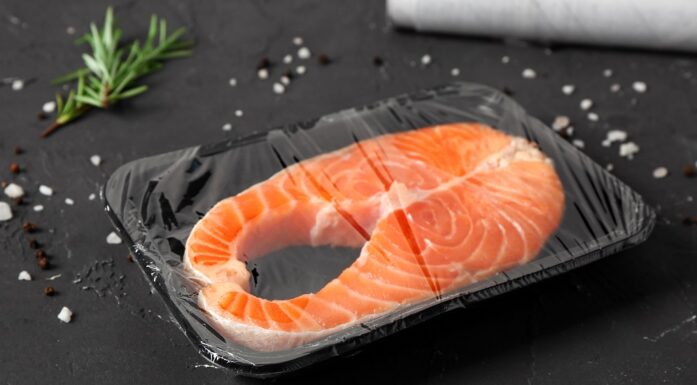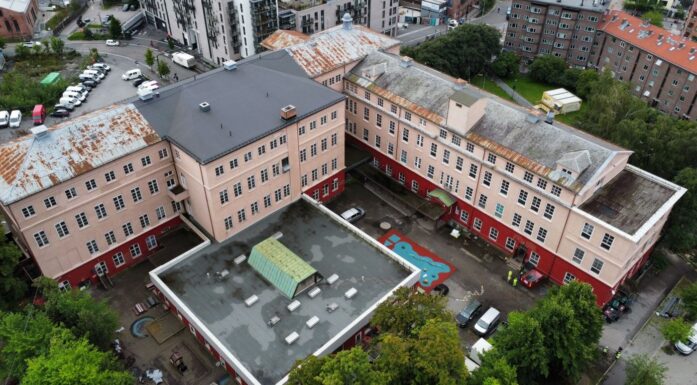Locking CO2 captured from seaweed in biocoal
Seaweeds cultivated in the sea off the coast of Trøndelag, Norway will be converted into biocoal and used to improve agricultural land. A new method for carbon capture and storage is now being trialled by Norwegian researchers.
Seaweeds have a remarkable ability to absorb CO2, and, according to Jorunn Skjermo, who is a research scientist at SINTEF, we ought to be learning how to exploit this process.
“Our current plans for emission reductions simply won’t be enough”, says Skjermo. “If we are to meet our climate change mitigation targets, we have no time to lose in removing CO2 from the atmosphere”, she says.
Carbon capture at sea
The process of making biocoal from seaweed will start on land with the cultivation of macroalgae seedlings on ropes. This will take place in labs at SINTEF in Trondheim and at a company based in the Netherlands, thus enabling comparisons to be made between two different approaches. In the autumn, the ropes will be installed at a cultivation facility in the Frohavet, which is a stretch of open ocean located offshore Fosen on the Trøndelag coast in mid-Norway.
Seaweeds grow slowly in the darker seasons, but as winter recedes and the days get longer, growth will accelerate. It is during this period of growth that the seaweeds absorb CO2, and next summer they will be ready for harvesting.
Since the concentrations of carbon dioxide in the atmosphere and the oceans are in balance, carbon capture from the sea has the same effect as that from the air.
Locking in the carbon
Once harvested, the seaweeds are then dried before pyrolysis is used to convert them into biocoal. This is achieved by heating them to about 600 degrees in an oxygen-free atmosphere. This process serves to modify the molecular structure and stabilise the carbon. The resulting biocoal is resistant to degradation by fungi and microorganisms.

The finished product – biocoal derived from seaweeds that can be used to improve soil, and which also stores the greenhouse gas CO2.
The pyrolysis stage will be conducted in laboratories at SINTEF Energy Research and at a commercial company.
The effect of the biocoal on arable land will be tested at the Mære Agricultural College in Steinkjer.
Improving the soil
“Deriving biocoal from seaweeds both captures and stores CO2, as well as resulting in a product for which there is a need”, says Jorunn Skjermo. Skjermo is heading the research segment of a project that has been given the name Seaweed Carbon Solutions JIP (Joint Industry Project).
The addition of biocoal to soil is intended to help boost porosity and water binding capacity. It will also create favourable conditions for the growth of microorganisms. When biocoal is combined with a fertiliser product that is also derived from seaweeds, the mixture serves to supply the soil with useful nutrients.
Out at sea
The offshore seaweed cultivation facility comprises a network of powerful ropes, or hawsers, on which the seaweeds grow, suspended from large floats. The facility will be anchored to the sea floor. Most such facilities currently in use in Norway are located close to the shore, but there are many reasons why SINTEF wants to install the trial facility in the open ocean in spite of the likelihood of much harsher weather conditions.
“Modelling indicates that seaweed yields will be higher the further we are from the coast”, says Skjermo. “We’ll be getting more seaweed per metre of rope. This is partly due to the fact that the period with access to nutrient-rich water will be longer. Water temperatures are more stable and the salinity virtually constant”, she explains.
Full-scale production in 2030
The test facility will cover an area of 650 decares, with production expected to be in the region of 600 tonnes of seaweed, which in turn will yield 25 tonnes of biocoal. SINTEF has calculated that a facility one square kilometre in size will produce 20,000 tonnes of seaweed annually, equivalent to the capture of 3,000 tonnes of CO2.
“I believe that it is realistic to upscale this approach to an industrial facility by 2030, says Skjermo.
“A factory will have to be built to produce the biocoal from the seaweeds”, she says. “Perhaps the best approach will be to locate such a factory close to a smelting works or other industrial plant that can act as a source of surplus heat. Not all the carbon in the seaweed can be converted into biocoal, so such a factory will have to have a system installed that captures and stores by-product CO2 from the pyrolysis process”.
Skjermo is convinced that seaweed cultivation will develop into a significant industry. Norway has an extensive coastline, large tracts of open ocean, favourable natural growing conditions, high levels of maritime expertise and ready access to clean energy.
Everything costs money
The production of biocoal from seaweeds will also result in new emissions of CO2. However, the researchers believe that the overall volumes reduced will be significantly higher.
– Seaweed cultivation and the production of biocoal will be expensive. So, what do the economics look like?
“No-one achieves major reductions in CO2 emissions for free”, says Skjermo. “Much will depend on how the authorities come to value the benefits in terms of climate change mitigation. The advantage of this capture and storage approach is that it also generates a product that offers a new source of revenue”, she says.
Skjermo emphasises that thorough assessments of the placement of seaweed cultivation facilities will have to be made in order to avoid conflicts in terms of competition for space.
Avoiding conflict
“It is vital that we exploit the ability of biomass to bind CO2”, says Skjermo. “This means exploring all the options available to us. Carbon capture at sea using seaweeds is more efficient than using plants on land, and the area available is potentially very extensive. We will have to look into which approaches offer the greatest benefit and the lowest levels of conflict. Many factors have to be taken into consideration. The open ocean also has many users and there will be competition for space.
The cultivation facility offshore Trøndelag is a good example, because it is located between a marine conservation area, a naval firing range, a fishing ground and a shipping lane.
An innovative concept
Johanne Tryggvason Hosen at SINTEF Ocean is acting as manager of the project as a whole and believes that the concept is unique.
“What we will achieve in terms of carbon capture by means of seaweed cultivation is innovative, incredibly exciting and locally-sourced in terms of the raw materials involved”, she says. “The project is founded on many years of research and experience in the exploitation of seaweeds. The green transition will require high levels of innovation”, says Hosen, who is keen to praise the project partners for their contributions and extensive cross-disciplinary expertise.
SINTEF’s partners in this project are DNV, Aker BP, Equinor, Wintershall Dea and Ocean Rainforest, which is a company based in the Faroe Islands that combines seaweed cultivation with the construction of cultivation facilities. The project has a budget of NOK 50 million.
Click on this link to find out more about the project: Seaweed Carbon Solutions (JIP) – SINTEF





